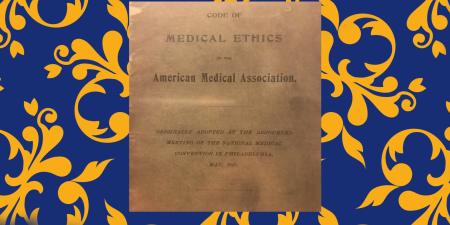Abstract
This short film considers ethical and clinical implications of the phenomenon of pseudo-stoicism, especially in medicine.
You Might Be Here Awhile
Media
This animated short film was created using frame-by-frame digital animation and original audio within Procreate® and Adobe Premiere® Pro CC 2022 (22.0).
In its simplest sense, stoicism is defined as a habitual reaction of impassiveness to pleasure or difficulty. Pseudo-stoicism, then, implies that this impassiveness is shrouded in a veil of spuriousness.
For much of their existence, medical school curricula and postgraduate training programs have placed limited emphasis on the development of emotional intelligence and empathy in trainees. In fact, Sir William Osler, in his 1904 essay Aequanimitas, postulates that a physician should be emotionally neutral and that this neutrality is overall beneficial for patient care.1 Over a century later, Osler’s recommendations still guide the attitudes and behaviors of physicians and their trainees.
In a profession in which pseudo-stoicism is de facto mandatory, crying and other expressions of emotion or empathy are widely regarded as “inappropriate” signifiers of weakness, fragility, or even incompetence. It is an unspoken norm for trainees to blunt these expressions of emotion to bolster the appearance of intelligence or to conform to their superiors’ expectations of professionalism. Many now cite “cynicism,” “callousness,” and “detached concern” as necessary evils in order to cope with the realities of health care.2,3,4 From these attitudes, images of stoicism easily develop. Removing the veil of spuriousness exposes an internal struggle to consciously suffocate empathy.
This short film considers who, if anyone, benefits from this apparent norm and questions whether there is much ethical or clinical value to stifling clinicians’ expressions of their humanity. Each frame is filled with familiar themes for the clinician. Some highlight the emotional conflict associated with delivering difficult news to patients. Am I allowed to feel my emotions? The struggle to fight back tears ensues. Other frames highlight periods of self-reflection for the clinician. When the white coat comes off, does the veil come off with it, too? How does the veil affect our personal lives? Who are we outside of our professions?
In general, the longer physicians practice, the more they stifle their emotions and the more they suffer. Inurement, emotional distress, and moral damage can result.3 Furthermore, pseudo-stoicism in both patient-facing environments and team-based environments prevents clinicians from building a habit of self-reflection and availing themselves of the opportunity for learning and self-improvement.3 For those struggling to reconnect with their stifled empathy, this film serves as a reminder that, above all else, practitioners are humans first.
One takeaway from this film could be summarized as Human, your suffering is not inevitable. Embrace your imperfections, embrace your vulnerabilities, and embrace emotions that come with being human.
References
-
Osler W. Aequanimitas. In: Aequanimitas With Other Addresses to Medical Students, Nurses, and Practitioners of Medicine—a History and Philosophy of the Profession. Pantianos Classics; 1914:1-12.
-
Eikeland HL, Ørnes K, Finset A, Pedersen R. The physician’s role and empathy—a qualitative study of third year medical students. BMC Med Educ. 2014;14(1):165.
-
Rentmeester CA. Should a good healthcare professional be (at least a little) callous? J Med Philos. 2007;32(1):43-64.
-
Halpern J. From Detached Concern to Empathy: Humanizing Medical Practice. Oxford University Press; 2001.



